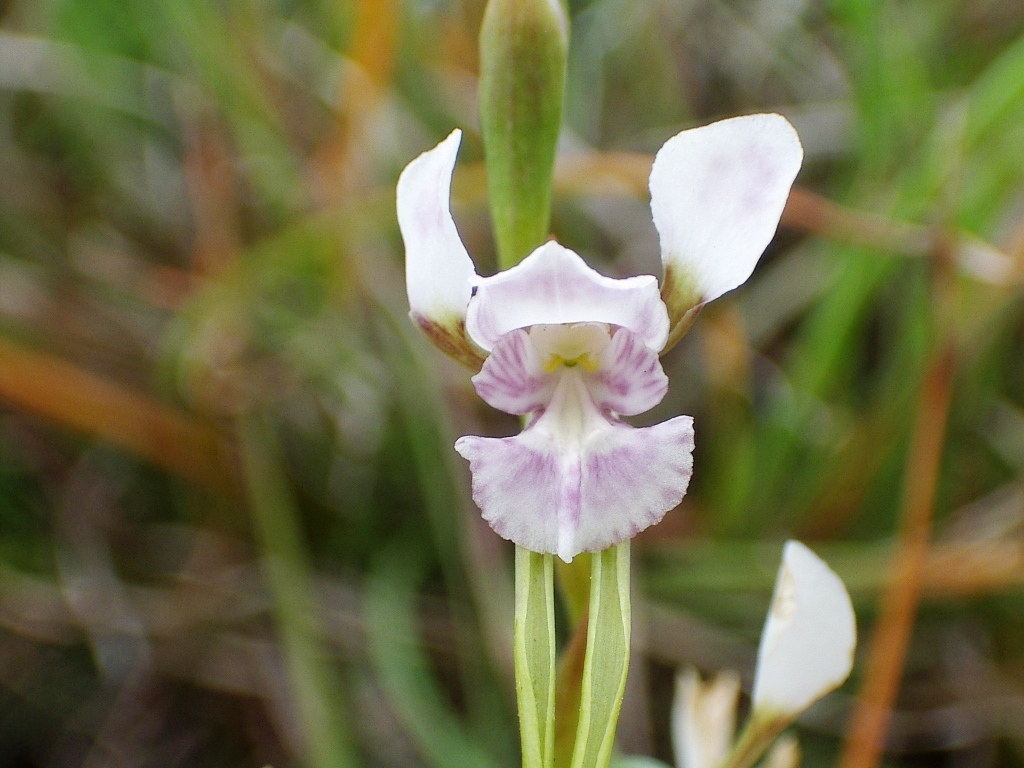Diuris fragrantissima
D.L.Jones & M.A.Clem.Flowering plant 10–20 cm tall, stout. Leaves 2, linear, channelled, 10–20 cm long. Flowers (1–)3–12, erect, white with mauve or pale purple markings, fragrant; pedicel (excluding ovary) 1–2 cm long, mostly enclosed within bract; dorsal sepal erect, ovate, 11–15 mm long; lateral sepals deflexed, virtually parallel, narrow-linear, greatly exceeding petals, 35–80 mm long; petals erect or recurved, ovate to elliptic, 12–20 mm long, mostly long-tapering to base (indistinctly clawed). Labellum 3-lobed from base, 10–12 mm long; lateral lobes about half as long as mid-lobe, oblong, erect, margins entire; mid-lobe keeled, broadly clawed at base, broadly cordate, triangular or fan-shaped, margins wrinkled, with 2 longitudinal yellow ridges to near midway. Column narrowly winged. Flowers Oct.–Nov.
VVP, GipP, OtP, CVU. Exceedingly rare, restricted to remnant dry grassland on the basalt plains near Sunshine west of Melbourne.
Diuris fragrantissima differs from D. punctata in its shorter, stouter stature, and in having stiff erect, strongly fragrant flowers that are white with pale purple markings. Diuris dendrobioides is similar to D. fragrantissima, but is a generally taller plant with longer lateral sepals and a later flowering period.
Efforts to establish this species in grassland reserves near Melbourne have had limited success.
Entwisle, T.J. (1994). Orchidaceae. In: Walsh, N.G.; Entwisle, T.J., Flora of Victoria Vol. 2, Ferns and Allied Plants, Conifers and Monocotyledons, pp. 740–901. Inkata Press, Melbourne.
 Spinning
Spinning
